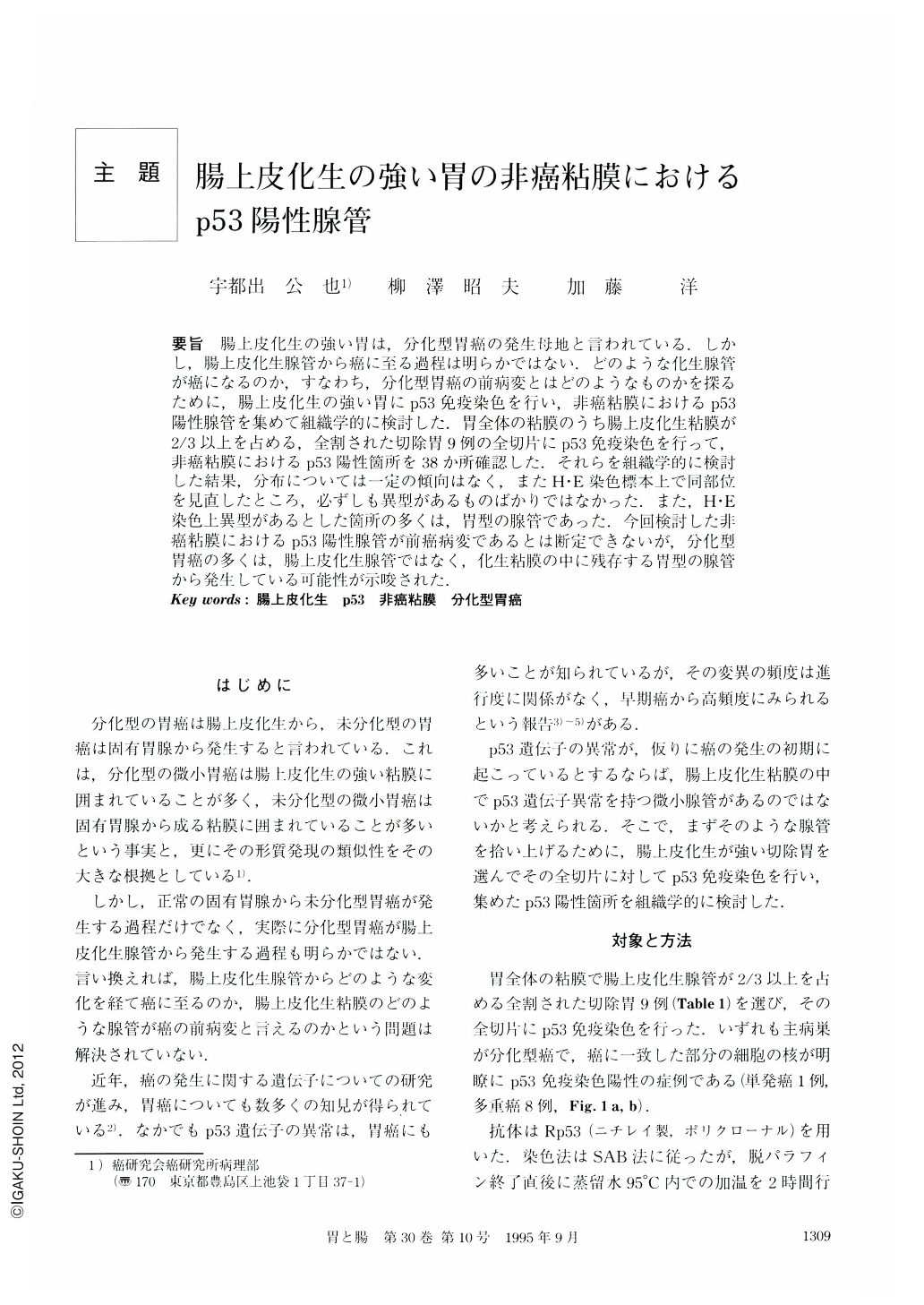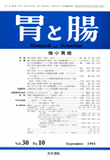Japanese
English
- 有料閲覧
- Abstract 文献概要
- 1ページ目 Look Inside
要旨 腸上皮化生の強い胃は,分化型胃癌の発生母地と言われている.しかし,腸上皮化生腺管から癌に至る過程は明らかではない.どのような化生腺管が癌になるのか,すなわち,分化型胃癌の前病変とはどのようなものかを探るために,腸上皮化生の強い胃にp53免疫染色を行い,非癌粘膜におけるp53陽性腺管を集めて組織学的に検討した.胃全体の粘膜のうち腸上皮化生粘膜が2/3以上を占める,全割された切除胃9例の全切片にp53免疫染色を行って,非癌粘膜におけるp53陽性箇所を38か所確認した.それらを組織学的に検討した結果,分布については一定の傾向はなく,またH・E染色標本上で同部位を見直したところ,必ずしも異型があるものばかりではなかった.また,H・E染色上異型があるとした箇所の多くは,胃型の腺管であった.今回検討した非癌粘膜におけるp53陽性腺管が前癌病変であるとは断定できないが,分化型胃癌の多くは,腸上皮化生腺管ではなく,化生粘膜の中に残存する胃型の腺管から発生している可能性が示唆された.
The stomach with sereve intestinal metaplasia is thought to be a condition at high risk for development of differentiated type gastric carcinoma (DCA). However, the detailed relation of intestinal metaplasia to DCA is still not known. Recently, it has been confirmed that several genetic changes are involved in development of gastric carcinoma and mutation and/or loss of heterozyosity of p53 gene play important roles in this process. Further, most of changes on p53 gene are believed to be reflected in intranuclear storage of its mutant product (protein) and to be immunostained positively in the routine histological sections.
Thus, we attempted to apply this p53 immunostaining on the stomachs with severe intestinal metaplasia to investigate how the p53-positive foci, if any, relate to intestinal metaplasia. Among nine stomachs which were cut wholly stepwise, having DCA (s) definitely positive for p53 and accompanying severe (or extensive) intestinal metaplasia, 38 microfoci were detected, which were in average 400 μm (100~2,000μm) in diameter.
They were distributed irregularly in the stomach without any tendency to be located near the site of main tumor and showed some atypia in some foci, but not in others. So for as the foci examined, the nonmetaplastic foci tend to show higher grade of atypia than the metaplastic ones. Thus, it can be postulated that the DCA develops more from non-metaplastic glands than from metaplastic glands.

Copyright © 1995, Igaku-Shoin Ltd. All rights reserved.


